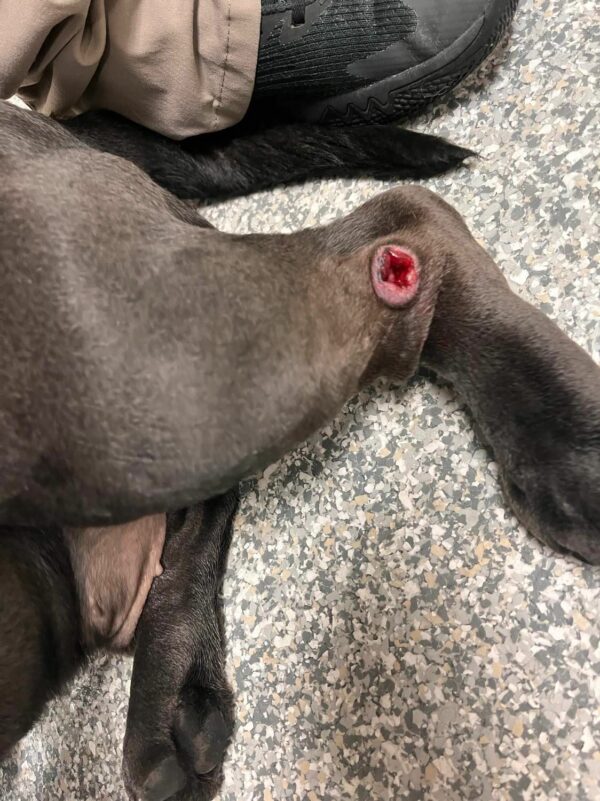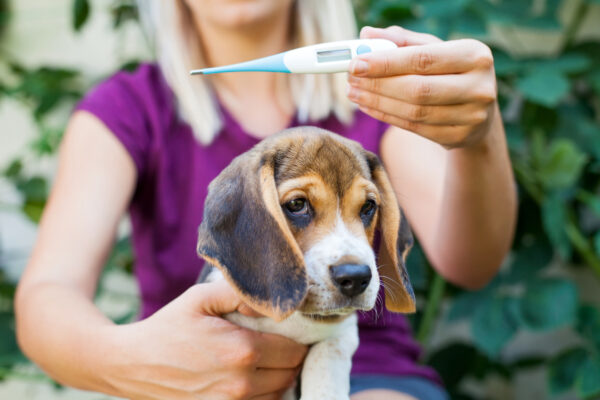Mites cause mange in dogs, which results in hair loss and skin inflammation. Two different types of mites cause mange — Demodex species and Sarcoptes scabiei. Puppies are born with Demodex mites, while Sarcoptes mites are contracted from exposure to other dogs, wildlife or contaminated bedding.
Is dog mange contagious?
Sarcoptic mange is; demodectic mange is not.
The mite named Sarcoptes scabiei causes Sarcoptic mange. We commonly refer to it as “scabies,” and it is highly contagious among dogs. It tends to spread quickly in places where large numbers of dogs are kept, such as shelters and boarding facilities. Sarcoptic mange is considered zoonotic, which means it can spread from dogs to people, too! It causes extreme itch and most commonly affects the ears, elbows, armpits, legs and bellies of dogs.
Demodectic mange in dogs is not contagious. Demodectic mange, also referred to as red mange, is caused by Demodex mites. These mites naturally live in hair follicles and oil glands and do not usually cause concern in healthy dogs because the immune system keeps them under control. However, in puppies or dogs with weakened immune systems — such as seniors or dogs who have underlying health issues — the number of mites can rapidly increase and result in mange. You can commonly see localized demodectic mange between the digits on the paws, around the eyes and on the muzzle, while generalized demodectic mange affects the entire body. This form of mange is not contagious to other dogs or people.
Signs & symptoms of dog mange
Mange causes characteristic signs in affected dogs. These include:
- Hair loss
- Red and inflamed skin
- Crusty patches, scabs and open sores
- Thickened skin
- Foul odor
Because sarcoptic mange is so uncomfortable, pet parents often notice their dogs aggressively chewing at their skin to combat the extreme itchiness. Demodex can result in itchy skin as well, but it is typically much milder. Both forms of mange can lead to skin infections, which may result in swelling and pain.
How to treat & manage dog mange
Most commonly, veterinarians treat mange using specific oral flea and tick preventatives that are also effective against mites. Dips, topical medications and injections are less commonly used for treatment. Medicated shampoos are often started prior to topical or oral therapies to improve treatment outcomes. These shampoos soften the skin, remove scales and crusts, and cleanse the hair follicles. Additional medications, such as antibiotics, antifungals or anti-inflammatories, may be prescribed in some cases. Although dogs start feeling better fairly quickly once treatment begins, it can take a couple months for their skin to heal and their hair to grow back.
To prevent the spread of sarcoptic mange, keep affected dogs separate from other pets until the mites have been eliminated. The dog’s environment, bedding, toys, collars and leashes should be thoroughly cleaned and disinfected. Wear gloves and wash hands and arms well after coming into contact with a dog who has sarcoptic mange.






